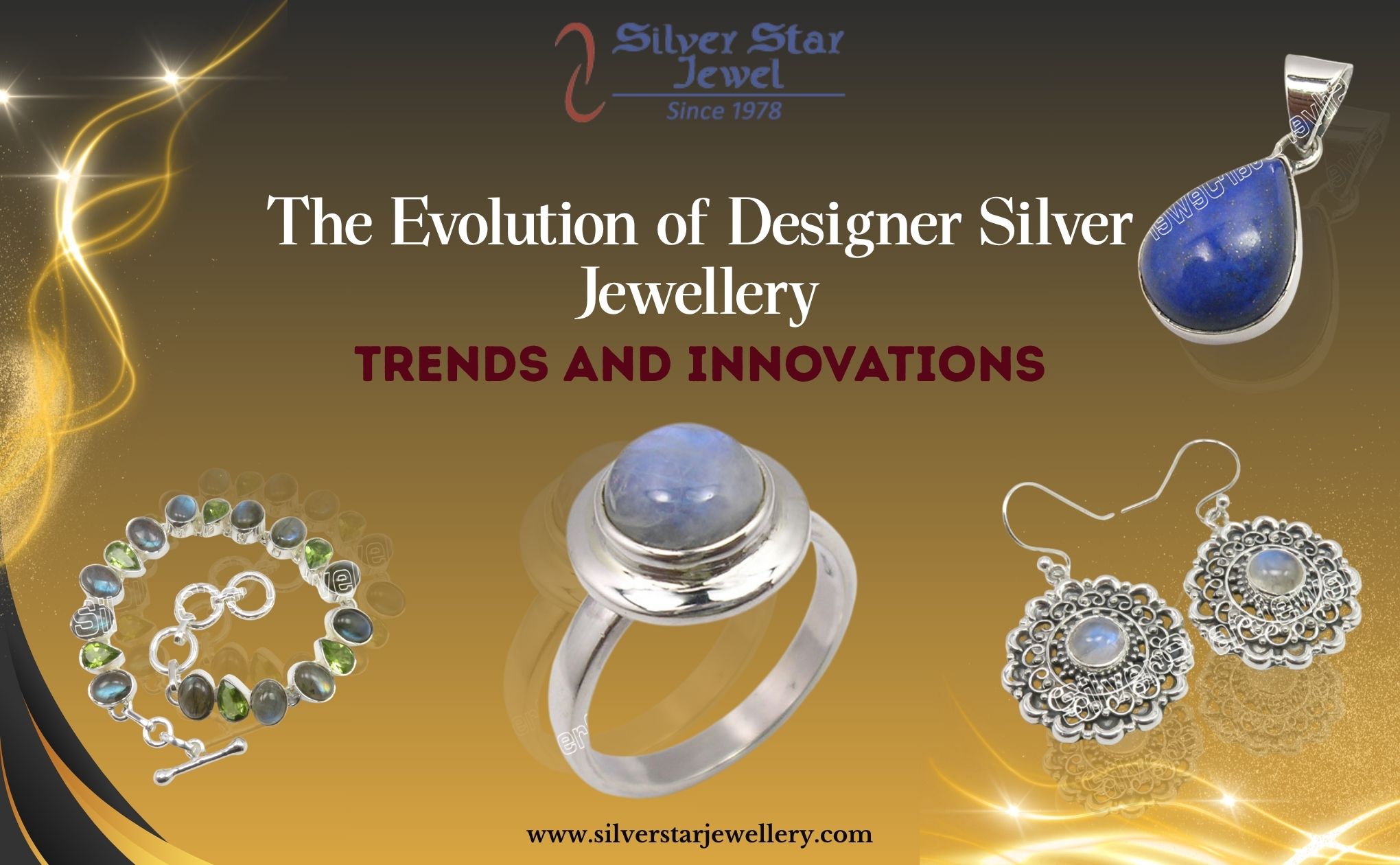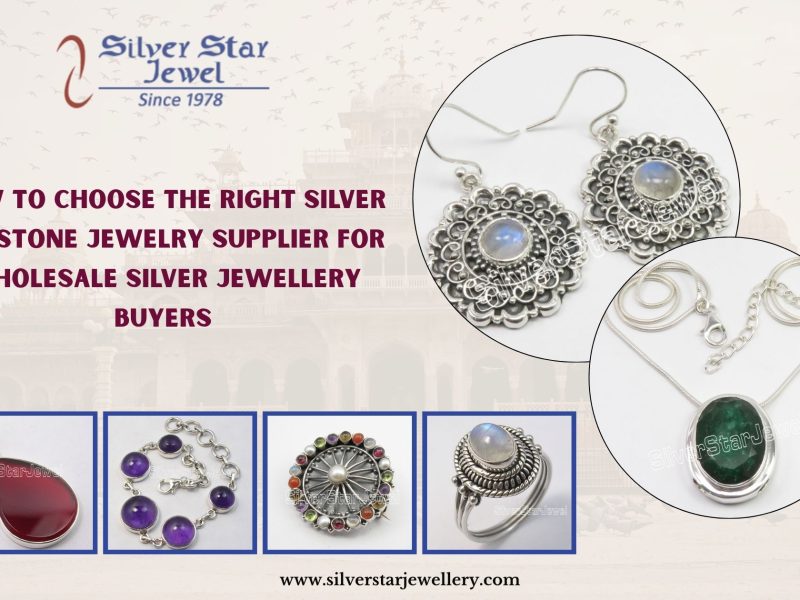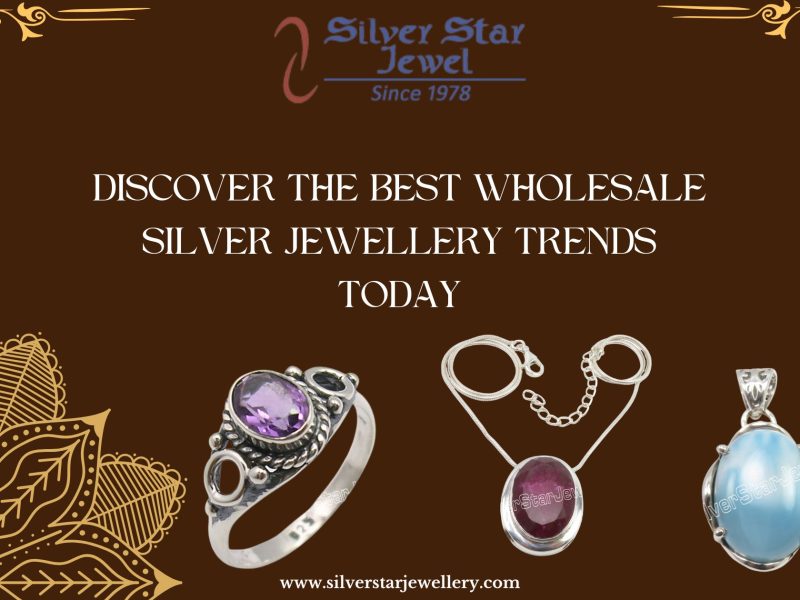Silver has long served as a foundational material in the jewellery industry, valued for its affordability, versatility, and ability to pair with diverse aesthetics. Over decades, the sector has shifted from mass-produced items to sophisticated pieces that blend craftsmanship with contemporary demands. Businesses today benefit from this progression by accessing suppliers who prioritize quality and scalability. As a silver jewelry manufacturer, Silver Star Jewel supports retailers through direct sourcing of sterling silver designs, enabling efficient inventory management and profit growth.
Historical Foundations of Silver Jewellery
Silver’s role in jewellery dates back to ancient civilizations, where artisans forged simple bands and pendants using basic melting techniques. In the 19th century, the Industrial Revolution introduced mechanized stamping, which allowed for faster production of ornate filigree work popular in Victorian eras. This period marked the transition from bespoke creations to more accessible items, laying groundwork for modern distribution models.
By the mid-20th century, silver gained traction in casual wear, influenced by post-war economic shifts that favored lightweight, everyday accessories. Manufacturers began incorporating semi-precious stones, expanding appeal to broader markets. For operations focused on volume sales, understanding these roots highlights the importance of reliable production partners who maintain traditional techniques while scaling output.
Key Trends Shaping Designer Silver Jewellery in 2025
Current market dynamics emphasize bold expressions over subtlety, with consumers seeking pieces that convey individuality. Chunky forms dominate, from oversized hoops to sculptural cuffs, providing visual impact without overwhelming outfits. Retailers can stock these to meet demand for statement accessories that transition from day to night.
Layering remains a staple, but with refined approaches like pre-assembled chains that simplify styling for customers. This trend reduces return rates by offering ready-to-wear solutions. Mixing metals, particularly silver with gold tones, creates versatile stacks that appeal to diverse demographics, boosting cross-selling opportunities in stores.
Sustainability drives selections, as buyers prioritize recycled silver and ethical sourcing. Brands that certify their processes see higher loyalty, translating to repeat orders for wholesalers. Organic shapes, inspired by natural contours, add artisanal flair to collections, differentiating inventory from generic stock.
- Chunky silhouettes: Opt for thick bangles or wide collars to capture attention in window displays.
- Mixed metal integrations: Combine silver bases with rose gold accents for hybrid appeal.
- Pearl infusions: Embed irregular pearls in silver settings for a fresh take on classics.
These elements position businesses to align with seasonal catalogs effectively.
Innovations in Production and Design
Advancements in fabrication have transformed how silver pieces come to life, with 3D printing enabling precise prototypes that cut development time by up to 50 percent. This method allows for intricate lattice patterns that handcrafting alone cannot achieve, ideal for limited-edition runs.
Laser engraving personalizes items at scale, embedding customer names or motifs directly into metal surfaces. For manufacturers, this opens revenue streams through customization services, increasing margins on bespoke orders. Bezel settings, which secure gems flush against silver, enhance durability and modern aesthetics, reducing wear in high-traffic retail environments.
Smart integrations, such as NFC chips in pendants, link physical pieces to digital certificates, appealing to tech-savvy buyers. Operations benefit from blockchain-tracked supply chains that ensure transparency, minimizing risks in international shipments. As a wholesale silver jewellery provider, Silver Star Jewel leverages these tools to deliver consistent quality across bulk orders.
Recycled alloys and lab-grown accents further innovate material use, lowering costs while meeting eco-standards. Workshops now employ waterless polishing to conserve resources, aligning production with regulatory pressures.
Operational Benefits for Businesses
Sourcing from specialized suppliers streamlines procurement, with direct manufacturer access cutting intermediary fees by 20 to 30 percent. This efficiency allows retailers to reinvest in marketing or expand product lines without straining budgets.
Scalable minimum orders accommodate growing enterprises, from boutique owners to chain outlets, ensuring flexibility in stock planning. Quality controls, including hallmarked sterling standards, prevent defects that could harm brand reputation.
In competitive landscapes, partnerships with exporters facilitate global reach, tapping into emerging markets like Southeast Asia where silver demand surges annually. Data from recent trade reports shows that diversified suppliers reduce lead times, enabling quicker responses to trend shifts.
For those entering wholesale channels, negotiating volume discounts secures pricing stability amid fluctuating metal costs. Silver Star Jewel, as a dedicated silver jewelry manufacturer, offers tailored logistics to support these strategies, fostering long-term vendor relationships.
Must Read: The Growing Demand for Amethyst, Blue Topaz & Silver Turquoise Earrings in Wholesale Markets
Future Outlook for the Silver Sector
Looking ahead, expect augmented reality tools to dominate virtual try-ons, allowing buyers to preview pieces remotely and reducing e-commerce abandonment rates. Lab-grown enhancements will proliferate, offering gem variety at fraction of mined costs.
Global trade agreements may ease import duties on silver goods, benefiting cross-border wholesalers. As personalization surges, manufacturers investing in AI design software will lead, predicting consumer preferences based on data analytics.
Sustainability mandates will evolve into industry norms, with carbon-neutral production becoming a baseline expectation. Businesses that anticipate these changes position themselves for sustained growth.
Frequently Asked Questions
Q1. What distinguishes designer silver jewellery from standard pieces?
Ans: Designer silver jewellery emphasizes unique motifs and high craftsmanship, often incorporating trends like organic forms, whereas standard pieces prioritize basic functionality for everyday use.
Q2. How does wholesale silver jewellery sourcing impact profit margins?
Ans: Wholesale silver jewellery sourcing eliminates middlemen, typically lowering costs by 25 percent and allowing retailers to price competitively while maintaining healthy markups.
Q3. What role does a silver jewelry manufacturer play in customization?
Ans: A silver jewelry manufacturer handles engraving and assembly for tailored designs, ensuring scalability for bulk orders without compromising on detail.
Q4. Are current trends in designer silver jewellery sustainable long-term?
Ans: Yes, trends like mixed metals and eco-materials in designer silver jewellery align with ongoing consumer values, supporting enduring market relevance.
Q5. How can businesses partner effectively with a wholesale silver jewellery supplier?
Ans: Businesses can partner effectively with a wholesale silver jewellery supplier by establishing clear order specifications and leveraging their expertise for trend forecasting.



